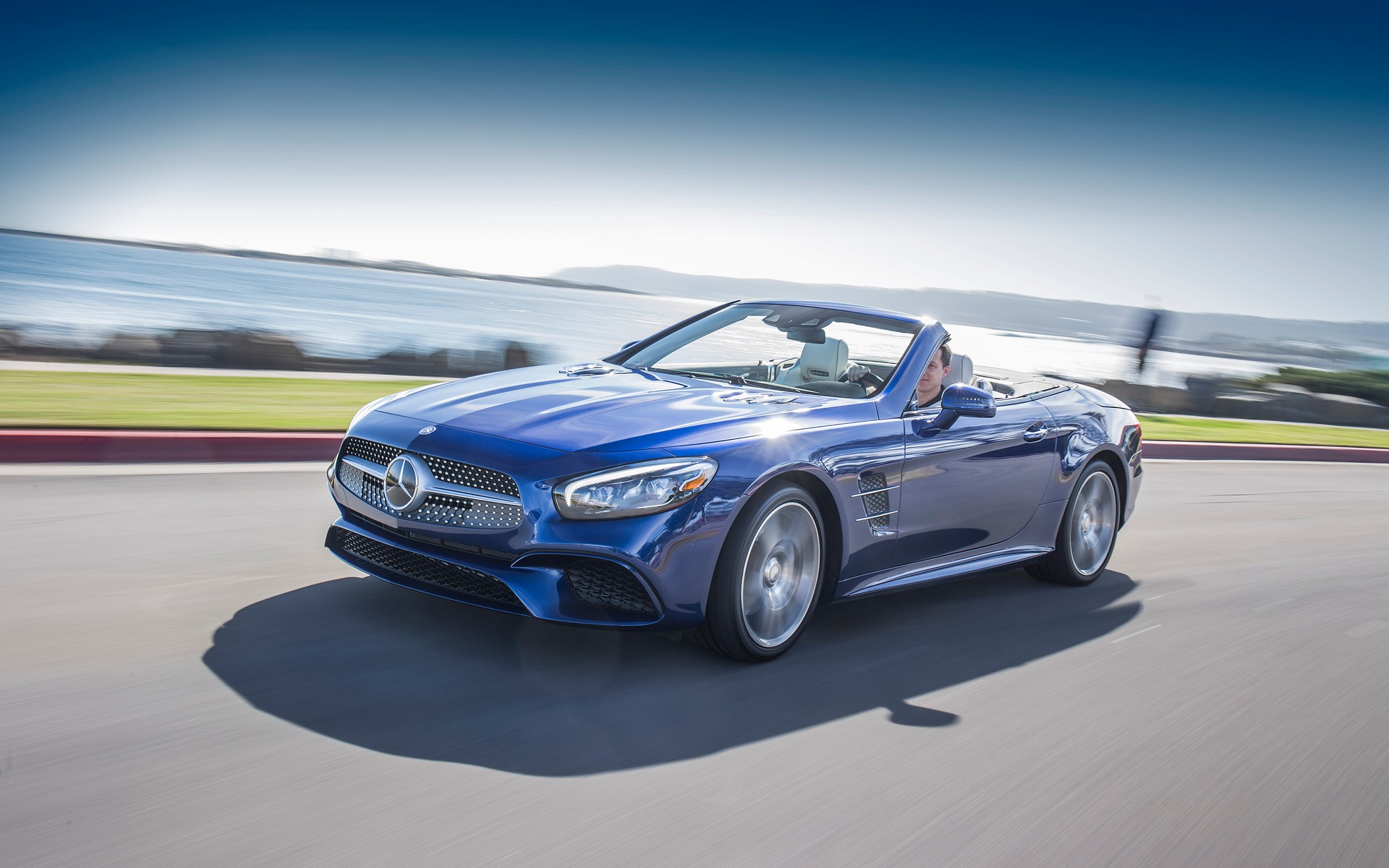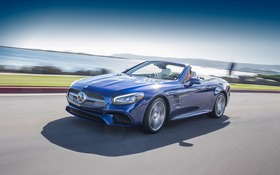2017 Mercedes-Benz SL: More Evocative and More Refined

| Strong points |
|
|---|---|
| Weak points |
|
If ever there was only one legendary model in Mercedes-Benz’s history, it would be the SL Gullwing. Designed in the 1950s to withstand the Carrera Panamericana and other gruelling tests, its success on the racetrack prompted Mercedes-Benz to build production model in its likeness. Today, these models are some of the most highly prized finds for collectors.
The SL Gullwing from this era was then featured in the outstanding French film Elevator to the Gallows directed by Louis Malle and set to music from jazz legend Miles Davis. In the more recent past, the SL Gullwing inspired the design of the SLS AMG, which was launched in 2010.
- Also: 2017 Mercedes-Benz SLC: A Sweeter Taste
- Also: 2017 Mercedes-Benz S-Class Cabriolet: When Too Much Isn’t Enough
Tribute to the 300SL Gullwing
The 2017 model is also inspired by the 300SL Gullwing that won the 1952 Carrera Panamericana. The similarities go beyond the top-hinged doors, as the front grille is also very similar. This grille boosts the SL’s presence, as do the new LED lights, creating a new visual signature that will eventually make its way to the brand’s other models. The rest of the model’s style is relatively unchanged, except for the bigger air intakes behind the front wheels.
In the past, the retractable power hard top could only change position when the car was stopped. Now, however, it can go up or down anytime, as long as you’re moving at less than 40 km/h. You no longer need to keep people behind you waiting once the light turns green. In fact, onlookers may find themselves admiring the incredible mechanical ballet unfolding in front of their eyes as you drive past.
New features
Inside, the cabin design is much the same, except the steering wheel, instrument cluster and the addition of two USB ports and one SD card port on the centre console. That said, the SL has new features, like Apple CarPlay, and the telematics system has a new presentation for the navigation, telephony, radio and Internet systems.
Four engines, four purposes
The new SL comes in four trims in Canada—all of which feature turbo engines. The line-up starts with the new 450 SL equipped with a 362-hp, 3.0L twin-turbo V6. Then there’s the 550 SL and its 449-hp, twin-turbo V8. Both of these models come with a new nine-speed automatic transmission. The SL 63 AMG and SL 65 AMG are back with the same engines as before, namely a 577-hp, 5.5L twin-turbo V8 and a 621-hp, 6.0L twin-turbo V12. They also feature the seven-speed AMG Speedshift transmission.
The new models will go into production on May 1, 2016, with the first units rolling into Canada as soon as early June. At press time, Mercedes-Benz Canada was unable to confirm the prices of these new models, but to give you an idea, the old models ran from $124,600 for the SL 500 to $245,000 for the SL 65 AMG.
On back-country mountain roads
Driving the SL 63 AMG on the mountain roads between Los Angeles and San Diego, we reacquainted ourselves with this very dynamic vehicle. It owes its performance to an exceptionally well-balanced chassis that distributes weight almost ideally (51% front and 49% rear).
What’s more, the SL 63 AMG comes with a sport suspension with five settings: Comfort, Sport, Sport Plus, Individual and Race. This means the driver can choose the type of handling they want. The thing that seriously hinders the SL 63 AMG’s sport potential is the fact that it weighs a whopping 1,845 kilograms. This has a direct impact on passing speeds, cornering and quick transitions from one curve to another. Consequently, this vehicle isn’t as agile as a Porsche 911 Turbo on winding roads, but the landscape nonetheless seems to flash by.
The SL leans in
The 450 SL and 550 SL include the Curve function first seen on the S 63 AMG coupe two years ago. This function allows the car to incline 2.65 degrees toward a corner, thereby reducing the side forces on the driver and passengers. I tested it myself and can report improved comfort, but not improved performance.
This means you can’t take corners faster, it’s just that it lessens the force you feel in turns. And while 2.65 degrees may not seem like much, it’s noticeable, especially as you enter a corner. It forces you to change the steering wheel’s angle slightly, particularly the first few times you take a corner, until your brain adjusts to it.
La dolce vita…
As the sun went down, we headed back onto the highway with the roof still tucked away in the trunk. The AIRSCARF system was activated and Miles Davis played out of the Bang & Olufsen sound system. This is the SL’s true calling: touring in comfort with your right foot resting lightly over the accelerator.











